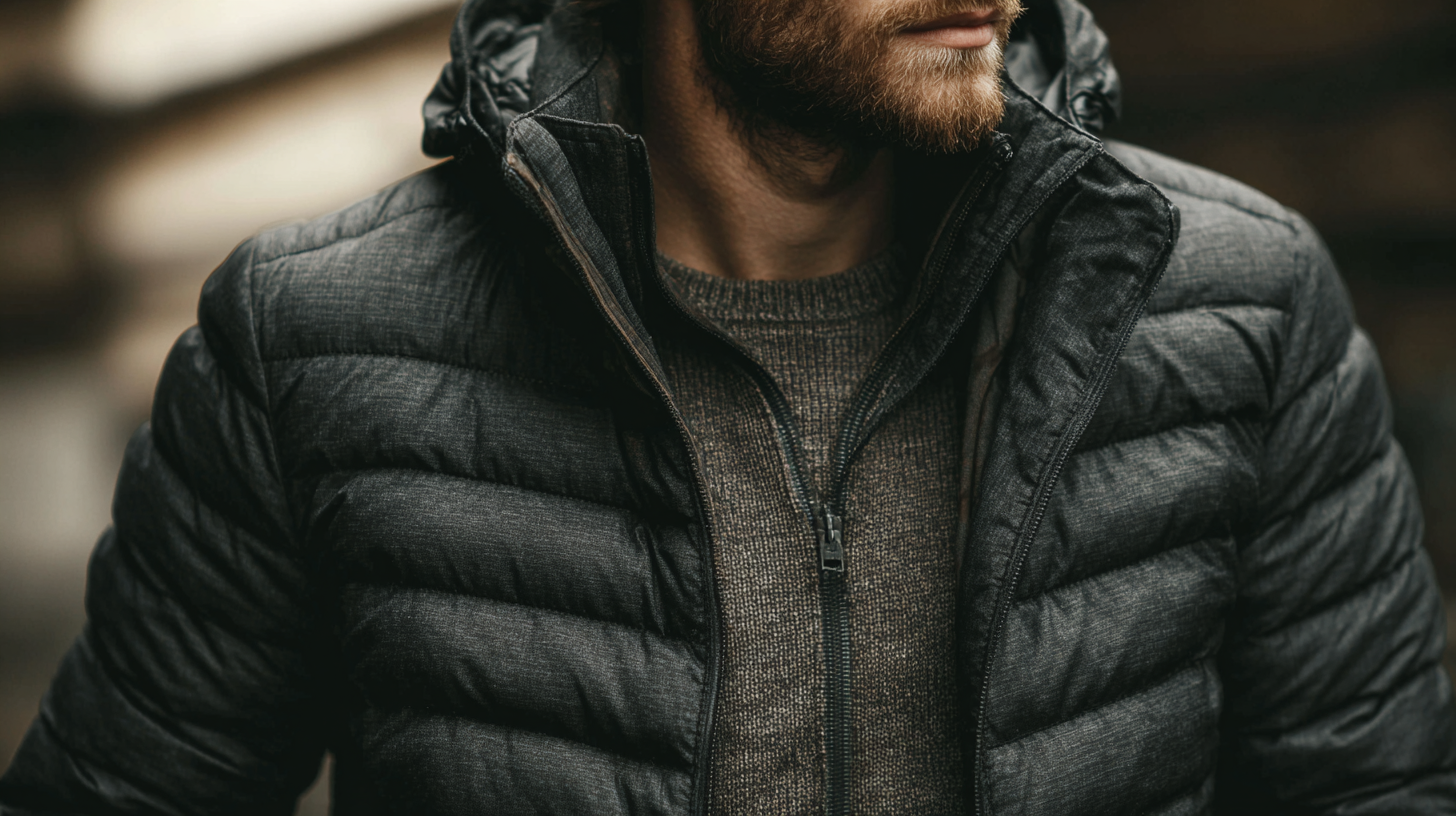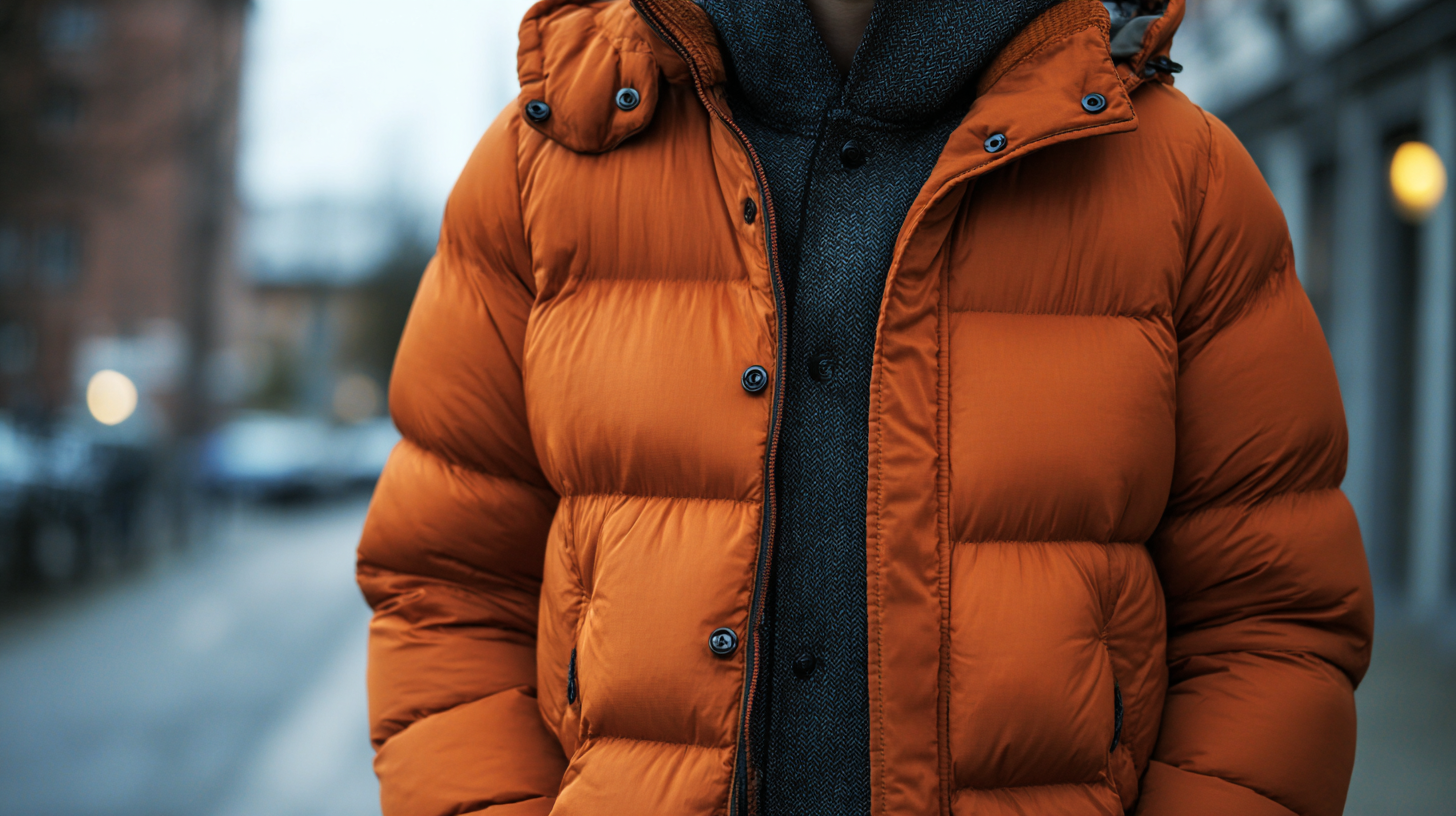 As we look toward 2025, the outerwear industry, particularly the market for puffer jackets, is poised for remarkable innovation. Recent reports from market research firms indicate that the global outerwear market is expected to reach approximately $200 billion by 2025, with puffer jackets playing a significant role in this growth due to their combination of functionality and style. With advancing materials technology and sustainability becoming a vital component of consumer decision-making, brands are increasingly focusing on creating lightweight, insulated jackets that not only provide warmth but also minimize environmental impact. This evolution in design and functionality reflects a broader trend where performance meets modern aesthetics, positioning the puffer jacket as a staple in urban and outdoor wardrobes alike. As consumers demand more from their winter wear, 2025 promises to showcase puffer jackets that are not only innovative but also meet the diverse needs of a changing world.
As we look toward 2025, the outerwear industry, particularly the market for puffer jackets, is poised for remarkable innovation. Recent reports from market research firms indicate that the global outerwear market is expected to reach approximately $200 billion by 2025, with puffer jackets playing a significant role in this growth due to their combination of functionality and style. With advancing materials technology and sustainability becoming a vital component of consumer decision-making, brands are increasingly focusing on creating lightweight, insulated jackets that not only provide warmth but also minimize environmental impact. This evolution in design and functionality reflects a broader trend where performance meets modern aesthetics, positioning the puffer jacket as a staple in urban and outdoor wardrobes alike. As consumers demand more from their winter wear, 2025 promises to showcase puffer jackets that are not only innovative but also meet the diverse needs of a changing world.
The evolution of puffer jacket materials has transformed outerwear fashion and functionality exponentially. In the past, down insulation was the gold standard for warmth, but advancements in technology have led to remarkable alternatives. Today, high-tech synthetic insulation options like PrimaLoft and Thinsulate offer comparable warmth and compressibility while being more resistant to moisture. This shift not only enhances performance but also caters to more ethical consumer preferences, eliminating concerns about animal welfare tied to down production.
When considering a new puffer jacket, it’s important to look at the insulation type. Opt for jackets that combine insulation materials to optimize warmth and breathability. Additionally, pay attention to the outer fabric; water-resistant or waterproof shells can provide added protection against the elements.
Another useful tip is to choose a jacket that features adjustable hoods and cuffs, allowing for a customizable fit that seals in warmth. Also, consider jackets with ventilation options, which can be particularly beneficial during high-activity outings, ensuring you remain comfortable without overheating. With these advancements and tips, your investment in a puffer jacket can provide you with the best possible warmth and protection in the coming years.
As we look toward 2025, the narrative surrounding outerwear is increasingly intertwined with sustainability, signaling a seismic shift in consumer expectations and manufacturing practices. The emergence of eco-friendly systems in the fashion industry has become a focal point. Brands are now adopting innovative approaches that prioritize sustainable materials, ensuring their products are not only stylish but also minimize environmental impact. This commitment extends beyond using recycled fabrics; it encompasses a broader vision for eco-conscious design, where each piece is crafted with the lifecycle of the garment in mind.
The trend towards sustainability is also reshaping marketing strategies. Engaging consumers through transparency about manufacturing practices and product origins has become essential. Brands are leveraging storytelling to connect with their audience, showcasing their eco-friendly initiatives and the tangible benefits they offer to the environment. This shift is not just about meeting regulatory standards; it’s a proactive effort to build a community of environmentally aware consumers who are increasingly wielding their buying power to support businesses that reflect their values. In this evolving landscape, the best puffer jackets of 2025 promise to be a harmonious blend of cutting-edge technology, style, and sustainability, paving the way for the future of outerwear.
As we look ahead to 2025, puffer jackets are set to undergo a transformation, thanks in large part to advancements in smart fabrics. These innovative materials not only enhance comfort but also significantly boost the functionality of outerwear, making it more adaptable to various weather conditions and user needs. According to a report by Research and Markets, the global smart textiles market is projected to reach $7.6 billion by 2026, driven by consumer demand for multifunctional apparel that can seamlessly integrate technology into everyday wear.
Smart fabrics are designed to respond to environmental changes, offering features such as temperature regulation and moisture wicking. For instance, adaptive insulation materials can adjust their warmth based on the wearer’s body heat and external temperature, promising a more personalized wearing experience. Additionally, integrated sensors can monitor the wearer’s activity levels and physiological responses, providing valuable data for health and wellness management. This intersection of fashion and technology not only reflects a growing trend but also addresses the increasing consumer preference for sustainable and efficient clothing options, with 57% of consumers willing to pay more for sustainable products, as per the Textile Exchange's 2022 report.
As we look ahead to 2025, the puffer jacket market is set to evolve significantly, driven by changing consumer preferences and economic dynamics. With economic growth slowing in various regions, particularly in major markets, consumer demand may face challenges. However, the resilience of the e-commerce fashion industry suggests that online sales channels could provide a vital boost for puffer jacket brands. The shifting landscape of retail, characterized by increased digital engagement and strategic merchandise planning, will play a crucial role in meeting consumer needs.

Moreover, major brands are adapting their strategies to navigate market uncertainties. The demand for puffer jackets is likely to be influenced by factors such as sustainability and innovative design. With consumers becoming increasingly eco-conscious, brands that prioritize sustainable materials and responsible manufacturing will likely gain a competitive edge. Understanding the intricacies of market projections will be essential for aligning product offerings with consumer sentiment, as the puffer jacket industry positions itself for growth amid evolving market conditions.
The future of outerwear, particularly puffer jackets, is evolving rapidly as fashion brands increasingly prioritize innovative design features that balance style and performance. In 2025, we anticipate that advancements in materials and technology will introduce jackets that not only provide exceptional insulation and weather resistance but also incorporate lightweight, breathable fabrics. Reports indicate that by the end of the decade, the global market for high-performance outerwear is expected to exceed $40 billion, reflecting a growing consumer demand for functional yet fashionable apparel.
